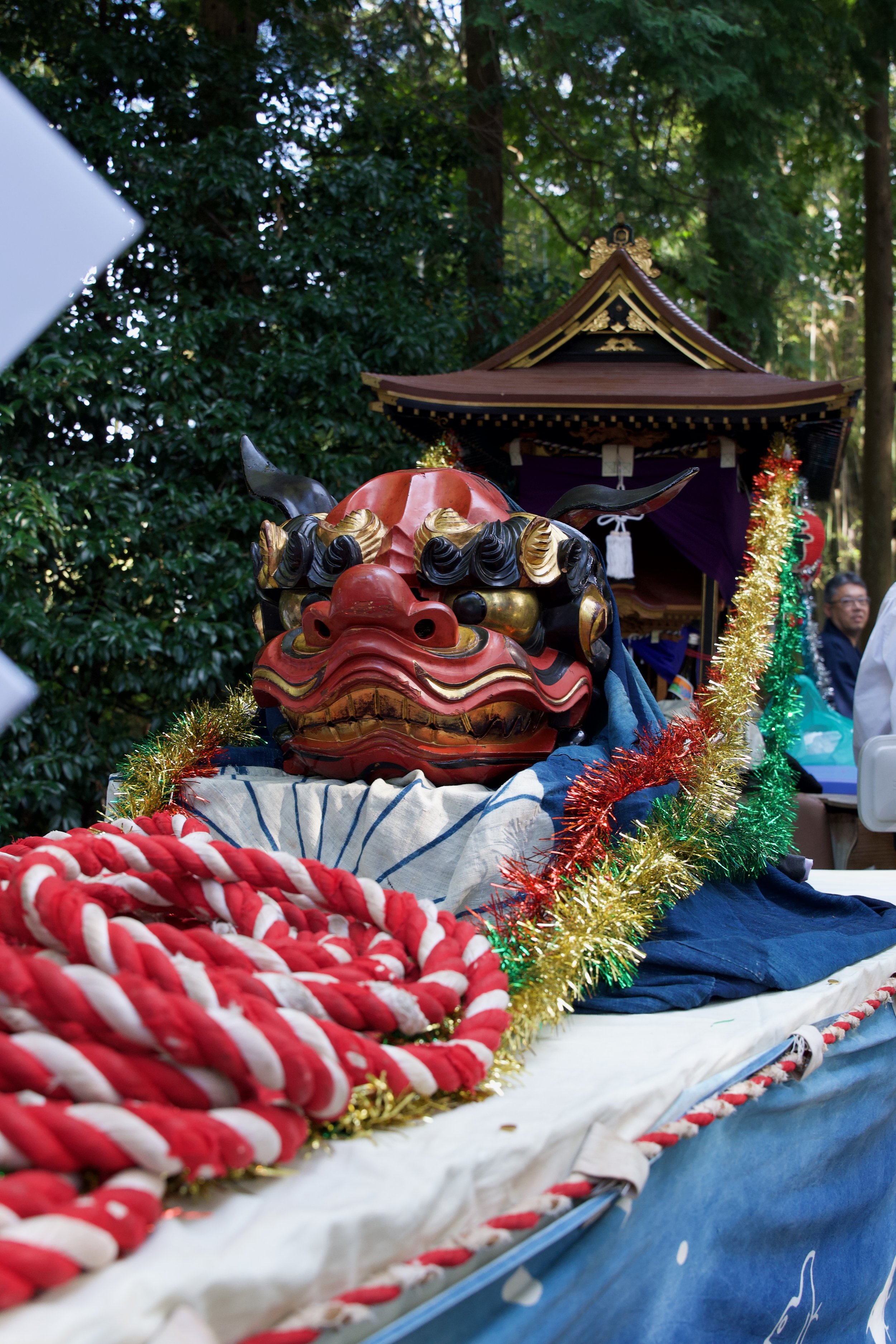What is the significance of festivals in Japan?
Kagura (神楽) is a traditional form of Japanese ritual dance and music dedicated to the kami (deities) of Shinto. It is performed as an offering during religious ceremonies at Shinto shrines, often as part of festivals or rituals to ensure blessings, purification, or a bountiful harvest. Kagura has ancient origins and continues to play a significant role in Japanese spiritual and cultural life.
Aoumi Shrine Annual Autumn Festival
The exact date of the founding of Aoumi Shrine is unknown. However, it is recognized as an ancient shrine (shikinaisha) listed in the Engishiki Jinmyōchō, a register of shrines compiled during the reign of Emperor Daigo in the Engi era (around 905 CE).
The annual festival on October 17 features lively events, including festival floats, kagura dances, and dedicatory performances from all the surrounding five districts.
This is an autumn festival where the five affiliated communities (ujiko) pray for a bountiful harvest and good fishing. Large drums and boat-shaped festival floats called hayashiyama - hayasu meaning feestival music or noise and yama meaning mountain, from each district are brought into the shrine.
In the past, house-shaped floats were carried known as yakata floats, but starting in the late 1940s, they gradually transitioned to boat-shaped floats, and now all floats follow this design. Traditional music and dances known as kagura meaning "entertainment for the gods," derived from "kami" (神) (deity) and "kura" (座) (seat or presence) are perforkmed to the Mountain Deity (Yama no Kami).
According to the "Wakasa Takahama Folktales," it is said that a great serpent once lived at the base of Mt. Aoba. When the serpent was slain, its severed tail fell to the site of Aoumi Shrine, forming the Misogi Pond.



